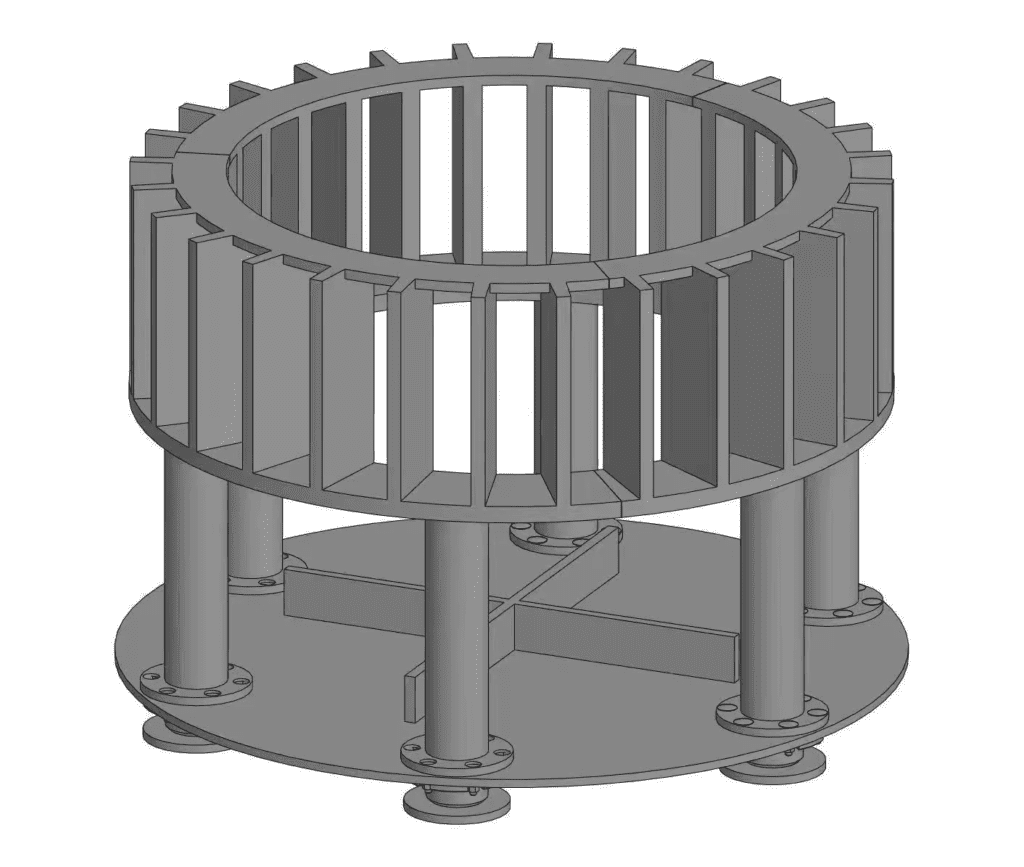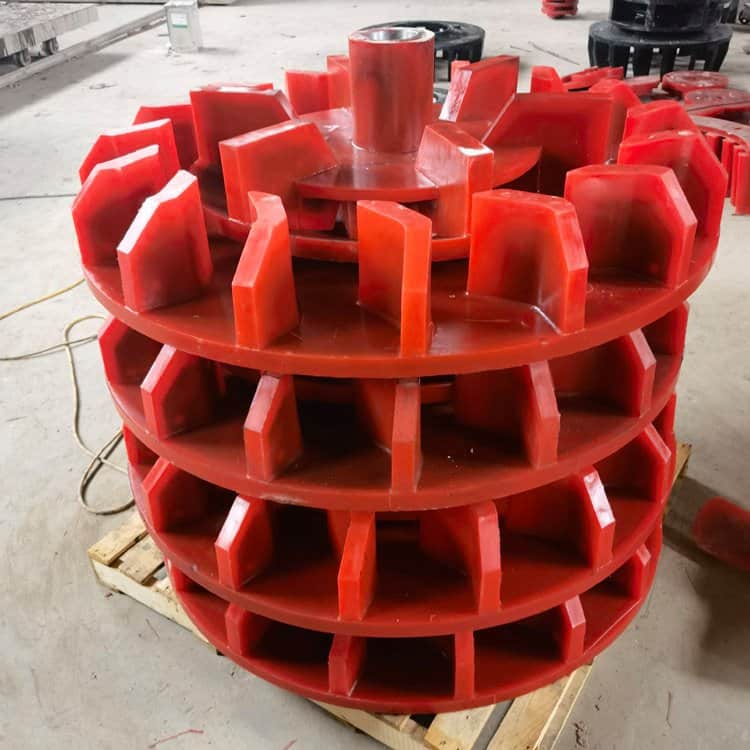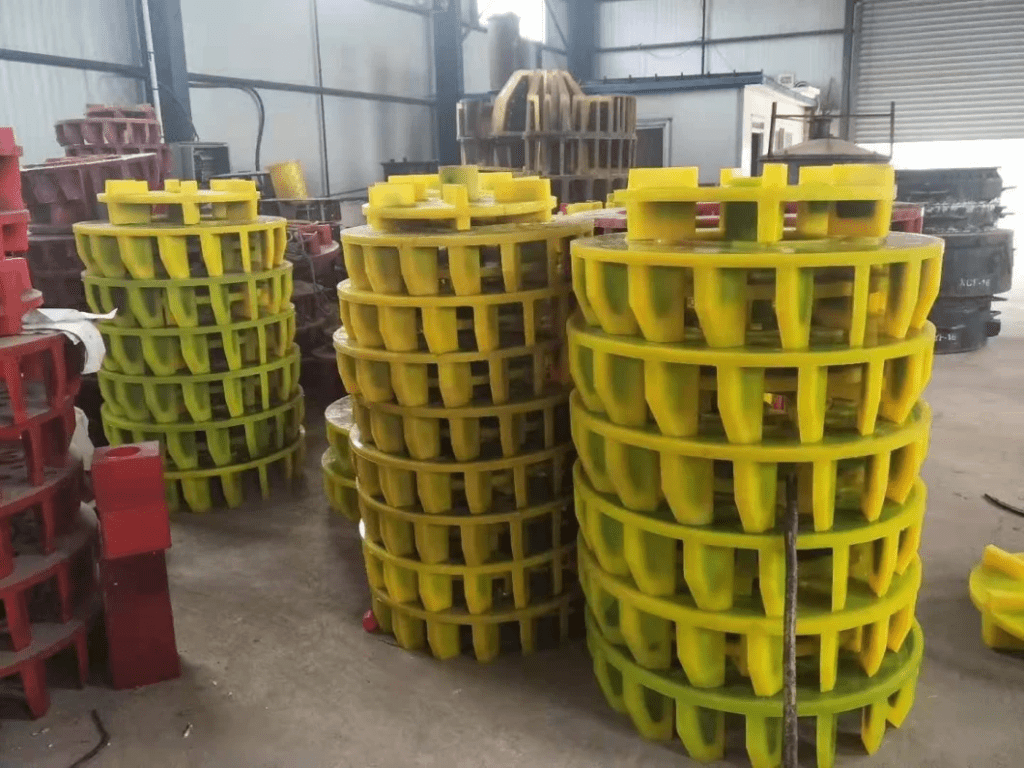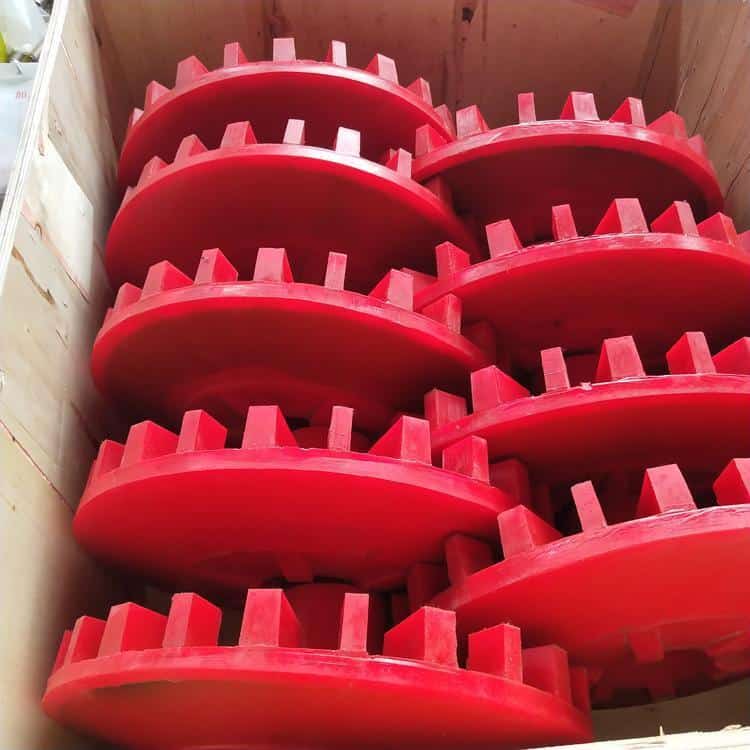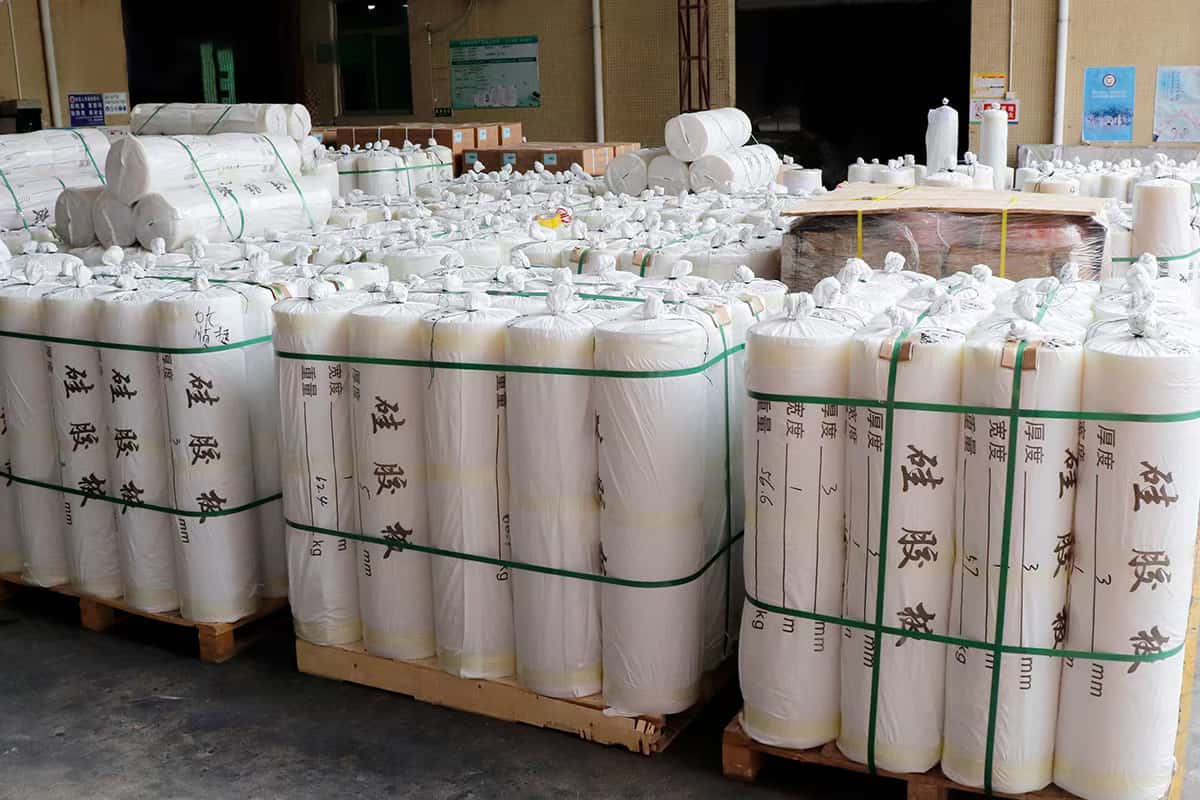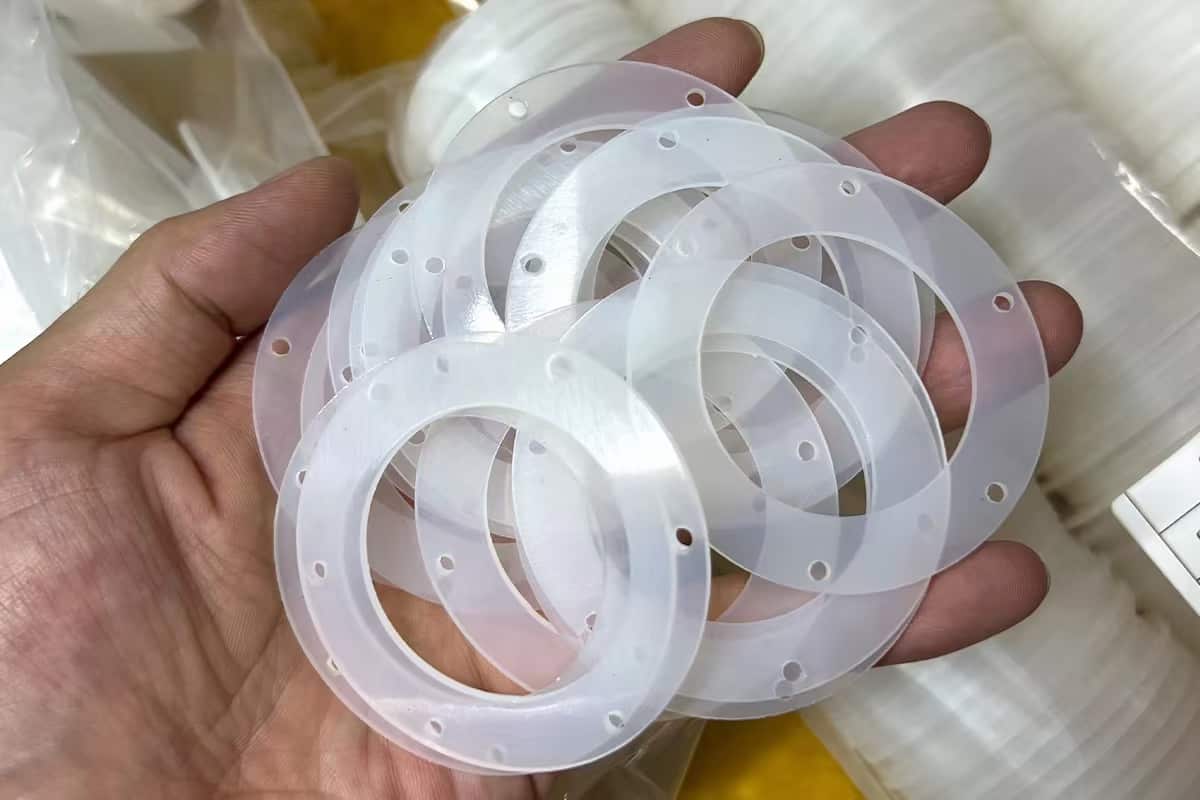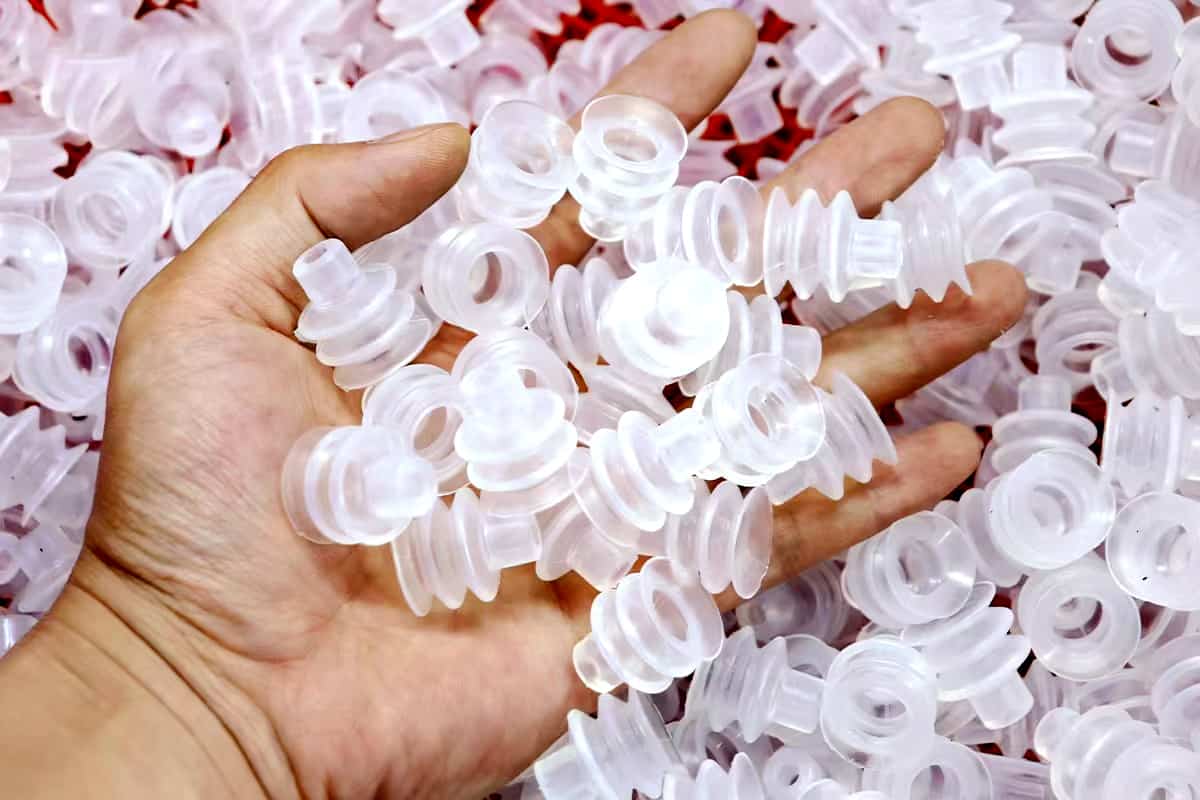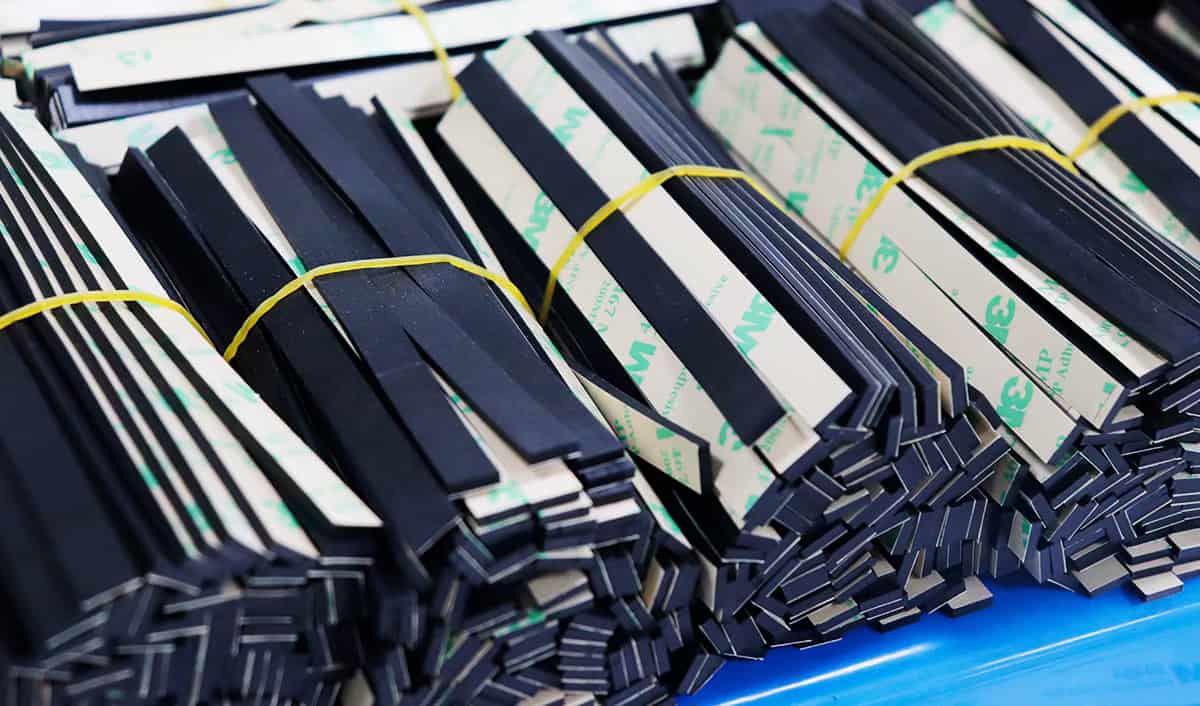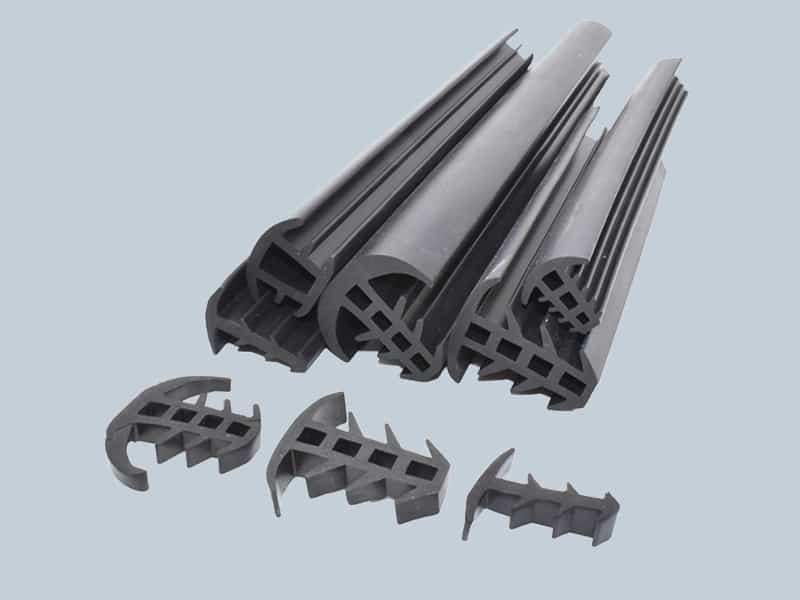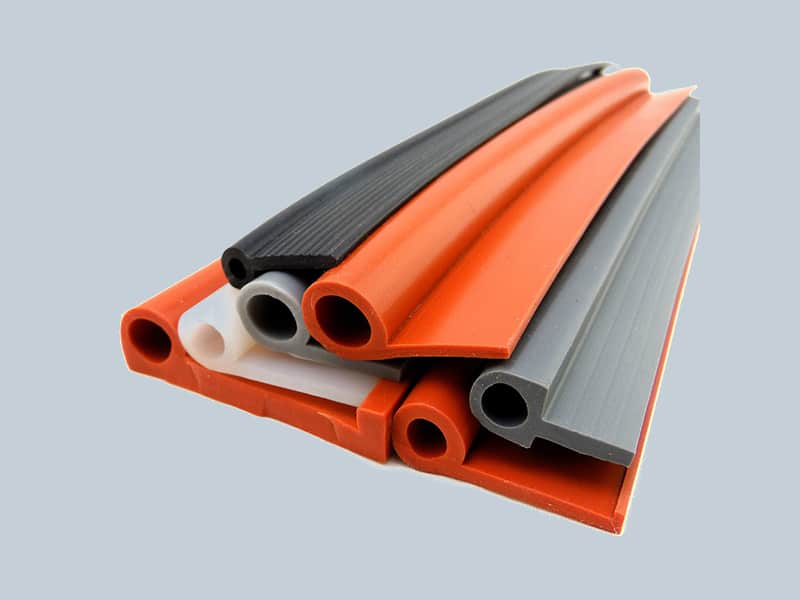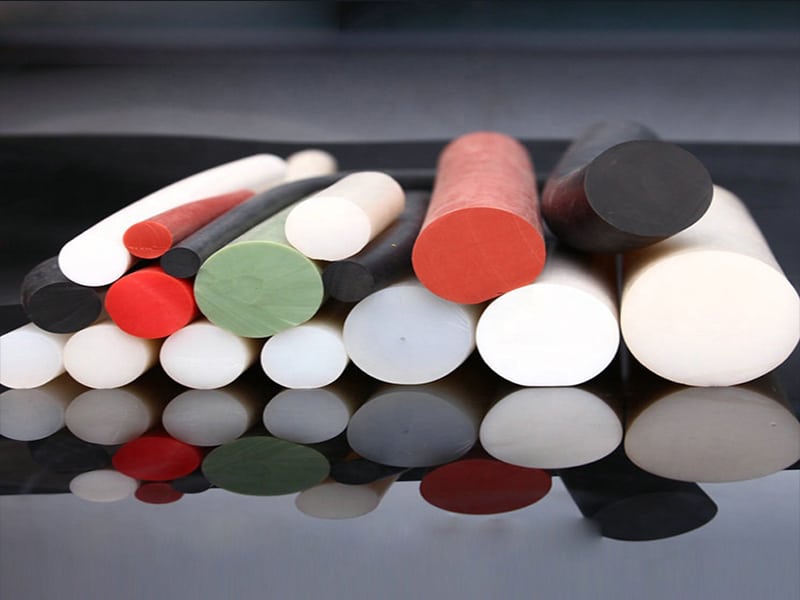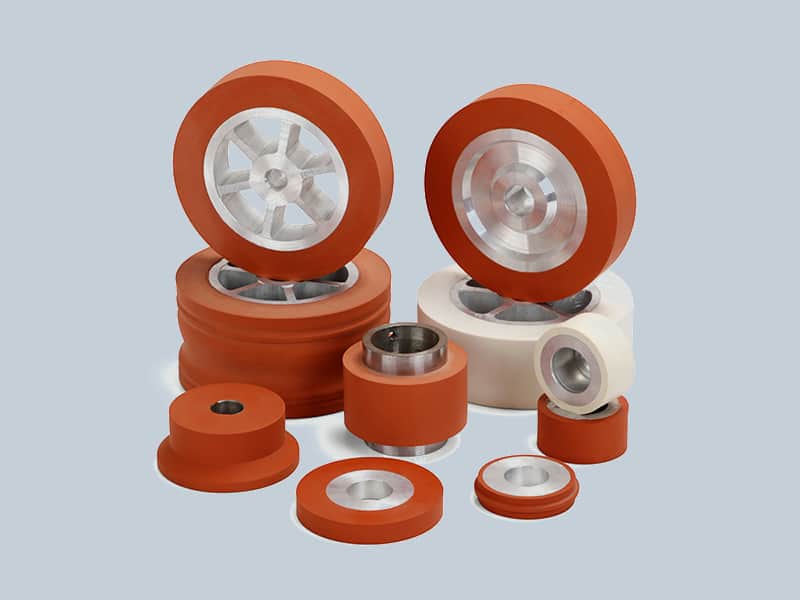Rotor and Stator for Flotation Cell Machine
Suconvey Rubber company supplies high quality and high strength polyurethane rotor and stator for flotation cell machine. The rotor and stator are key components in a flotation cell, which is used to separate minerals from their ore. The rotor is the rotating component that creates the centrifugal force necessary for mineral separation, while the stator is stationary and designed to maximize turbulence within the cell. Together, they create a complex system of fluid dynamics that allows for efficient separation of minerals from their ore.
Polyurethane impeller rotor and stator Manufacturer
Key Features
- Very abrasion resistant
- Resistant to hydrolysis
- Resistant to acids, bases, oils
- High strength as plastic and as high elastic as rubber
- Different materials can be available
- Wear-resistant polyurethane, Anti-corrosion, and long service life
- Used in Gold mining, Copper mining, Heavy metals mining, Light metals mining, Coal mining and processing, etc.
Our service
- On-time Dispatch Guarantee
- Supply free samples and design drawing
- Customize the size, thickness, color, hardness as you need
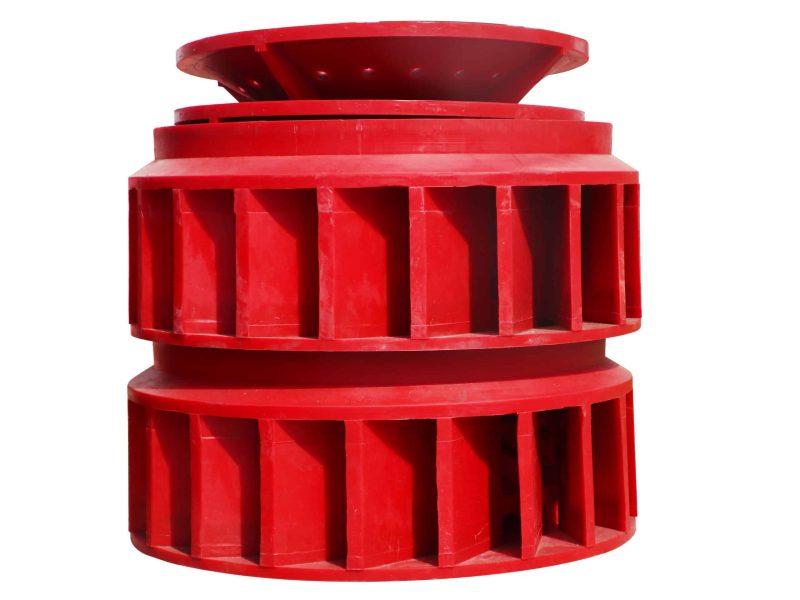
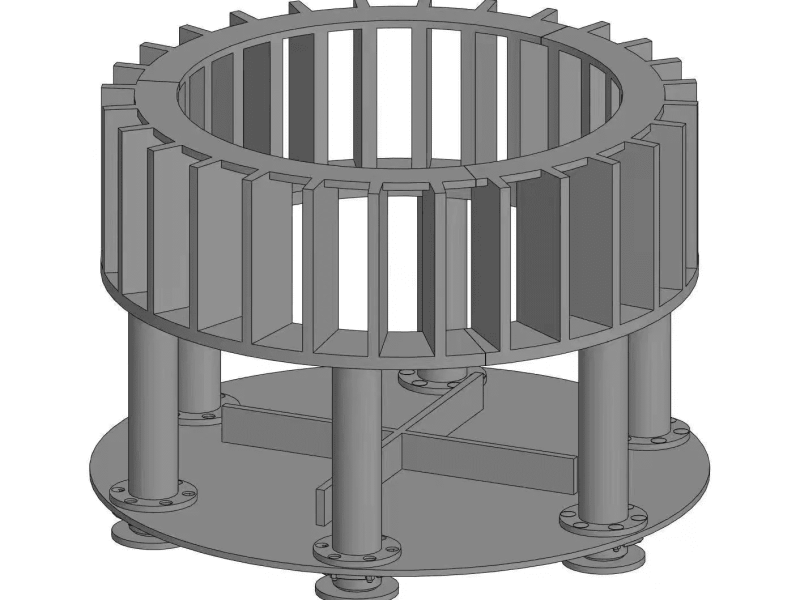
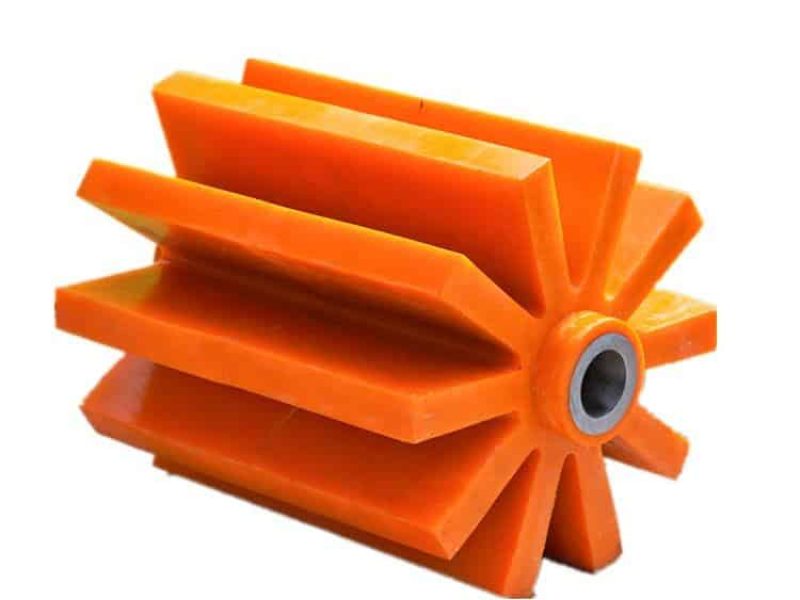
CUSTOMER rotor and stator APPLICATIONS SHOWCASE
- 8 years manufacturing experience
- Good raw materials
- After-sales support services
- Standard and Strict Dimension
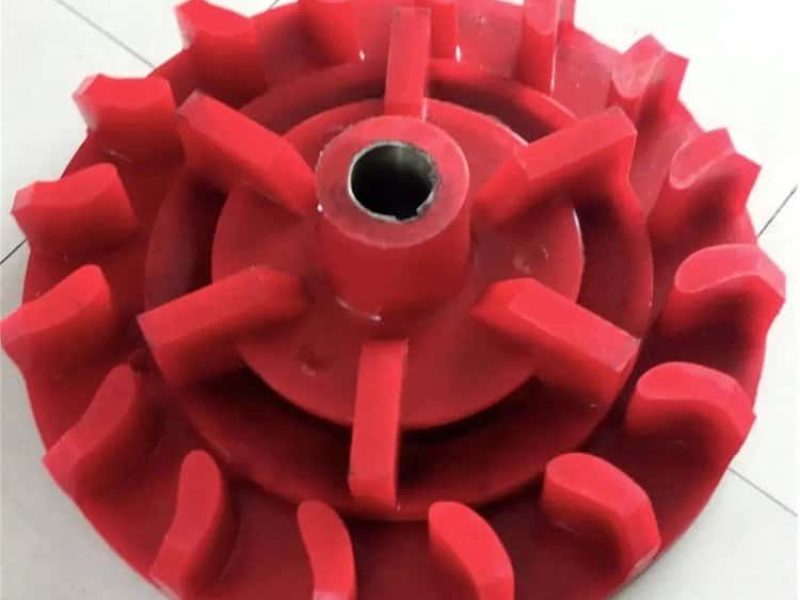
Polyurethane Flotation Rotor
very abrasion resistant
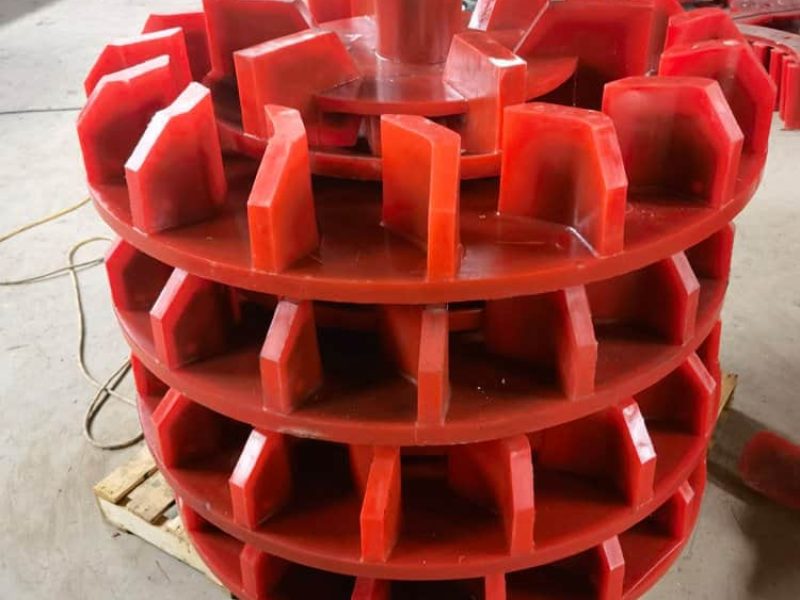
Polyurethane Flotation Stator
resistant to acids, bases, oils
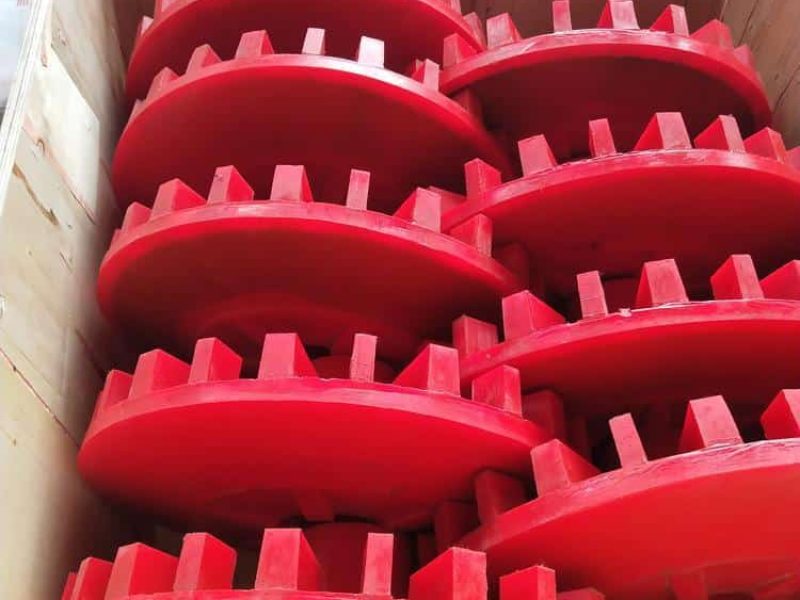
PU Flotation Cover Plate
long service life
Don’t Know What To Start With?
Get A Solution For Your rotor and stator
About Company
contact us
Suconvey Wholesale Can Be Easy & Safe.
No matter what kind of rubber products you want, based on our extensive experience, we can manufacture and supply it.
- Shenzhen Suconvey Rubber Products Co., Ltd.
- Ronglichang Industrial Park, No. 4 Zijing Road, Longgang District, Shenzhen City
- Stephanie
- 86-13246961981
- [email protected]
Free Consultation
Get a free quote
About SUCONVEY
Leaders In rotor and stator
At our company, we specialize in manufacturing high-quality flotation rotors and stators for various industries such as mining, mineral processing, and wastewater treatment. Our team of experts uses state-of-the-art technology and materials to ensure that all our products meet industry standards and customer requirements.
We understand that every application is unique, so we offer customization services to meet specific needs. We work closely with our clients to design and manufacture rotors and stators tailored to their exact specifications. Our commitment to quality ensures that each product will perform efficiently and reliably for years to come.
we conduct thorough inspections at every stage of production to identify any defects or inconsistencies. This includes visual inspections as well as more advanced tests such as X-ray imaging and ultrasonic testing. Once the components are completed, we subject them to further testing including fatigue testing to measure durability under stress.
About Company
Benefits of rotor and stator
1. Improved mineral recovery rates: This is because a well-designed system can better control bubble size and distribution, which helps increase attachment rates between bubbles and minerals. Additionally, using more durable materials such as polyurethane can help extend their lifespan while reducing maintenance needs.
2. Increased process stability: When the components are properly designed and installed, they can provide consistent performance over time regardless of variations in feed or flow rate. This not only minimizes downtime but also helps ensure product quality by maintaining consistent separation results. Overall, choosing high-quality rotor and stator technology for flotation systems offers significant advantages over lower-cost alternatives in terms of productivity, efficiency, longevity, and operational cost savings.
About Design
How to design rotors and stators for flotation?
1. One key consideration is the shape and size of the rotor blades. The blades need to be designed in such a way as to optimize mixing and dispersion within the flotation cell, while also ensuring that the flow rate through the cell is optimized.
2. Another important factor to consider when designing rotors and stators for flotation is material selection. The materials used must be durable enough to withstand harsh operating conditions, such as exposure to corrosive chemicals or high levels of abrasion. At the same time, they need to be lightweight so as not to overly burden the flotation system.
3. Other design considerations for rotors and stators in flotation include factors like blade pitch angle, helix angle, blade overlap angle, and more. All of these variables can impact fluid dynamics within the cell, so careful attention must be paid during design in order to achieve optimal performance from both components.
About Types
Types of Rotors and Stators
There are different types of rotors and stators used in the flotation process, which is crucial in mineral processing. One type of rotor is the open type, which allows for easy flow of pulp into the rotor. Another type is the closed one, where only a small opening is present for efficient separation. The third type is the semi-open rotor, which combines both features.
Stators are also essential components in flotation cells since they aid in generating and controlling air bubbles. There are various types of stators available based on their orientation and shape. For instance, flat-bottomed stators have an even surface that allows for smooth movement of air bubbles without turbulence. On the other hand, tapered bottomed ones allow for efficient collection of particles by funneling them towards the impeller.
It’s worth noting that there’s no one-size-fits-all approach when it comes to selecting rotors and stators since each application has its unique requirements. Therefore, before choosing either component or both during maintenance or replacement procedures in your flotation cell system, it’s vital to consider several factors such as particle size distribution and solids content to optimize efficiency while minimizing downtime and operational costs.

